KTM is an Austrian motorcycle and sports car manufacturer with roots dating back to the 1930’s and a more formal partnership forming in 1954 between Ernst Kronreif and Trunkenpolz Mattighofen. What began as a car repair shop eventually transitioned into a motorcycle manufacturing operation after some struggle post WWII. The company gained widespread recognition with a win in the the Austrian 125cc national championship in 1954 and the International Six Days Trials shortly thereafter. These days, KTM has several divisions including an electric bike arm with unique models being produced and sold in the US. Having seen, tested, and reviewed the original KTM Macina Force hardtail model at an Ebike Expo event in 2016, I was excited to see what was on offer with the Macina Lycan Special Edition. Amazingly, both ebikes weigh about the same. Usually, full suspension electric mountain bikes weigh 50+ lbs but the Macina Lycan SE comes in closer to 47 lbs. This is due to its premium air suspension components from RockShox, lightweight 24-spoke Mavic wheelset, standard 100 and 142 mm hub sizes (vs. wider Boost on many other bikes), narrower 2.25″ tubeless tires vs. 2.8″ plus size, and slightly smaller Bosch Powerpack 400 battery. Weight is distributed evenly front to rear and the battery and motor are placed low and center, as you’d expect. Functionally, aside from a unique suspension fork choice (being longer travel than I would have expected for a cross country model), the bike is excellent. Price wise, I feel it’s on the expensive end of the spectrum. And visually, I feel that it’s not as streamlined as some of the other new Bosch powered e-mountain models. The motor and battery look nearly identical to the 2016 Macina Force… and that’s not terrible, but when you see what Haibike, Cannondale, Lapierre, and Trek are doing with motor position, casing design, and battery seating… it feels a bit outdated. Other highlights include a Vyron electronic dropper seat post from Magura with 150 mm travel, and a 10-speed Shimano SLX drivetrain with Shadow Plus one-way clutch, and 180 mm Shimano hydraulic disc brakes. I’d like to be more excited about this product but the price feels high. It’s called “special edition” but it’s built around an Aluminum frame using the same drive system and similar suspension as $4,500 models… and the wheels certainly can’t be worth $3k+ so please help me with a comment if I’m missing something?
Driving the bike is mid-drive motor from Bosch. It’s the same Performance Line CX drive that was used on the 2016 Macina Force with a slightly altered plastic cover. Both motors are capable of offering eMTB mode with the latest software update and that effectively transforms Sport level assist into a full-range output… so you can ride with minimal or maximum motor support based more on torque and not have to reach over and click the button pad while navigating rough mountainous terrain. The motor spins a 15 tooth chainring 2.5 times for every crank arm revolution resulting in a 37 tooth equivalent. The downside is that this chainring is so small, the chain regularly makes contact with the slap guard and even the yolk are of the right chainstay. Bosch has told me that these smaller chainrings increase grab but I have heard from some UK owners that they can also suffer from chain suck as mud piles up on the drive side of the motor. I appreciate the alloy chainring guard, which prevents drops and protects pant legs, and I love how quickly the chainring starts and stops under motor assist. The downsides are higher noise volume, especially with the CX motor in the higher levels of assist and pedaling at high RPM. You can get motor support up to 120 RPM which feels great if you like to spin. Some other electric bike motors, like the early Yamaha system, basically forced you to change gears to reach higher speeds. And you do still need to change gears to hit the max 20 mph assisted speed on the Macina Lycan, but you you don’t have to go through quite as many. With a 10-speed Shimano SLX drivetrain, you’ve got more than enough range to climb and top 20 mph and I like the little Shadow Plus clutch for tightening the chain and reducing slap… at least a little bit.
Powering the motor, backlit display panel, and integrated Micro-USB port is a 396 watt-hour Bosch battery pack. Inside are 18650 Lithium-ion cells known for being durable and lightweight. This pack has been a leader for several years now and was upgraded to the Powerpack 500 in 2017 but I guess some companies can save money or weight by using the original Powerpack 400. And, that seems to be the case here. I was really surprised, given the price, not to see the Powerpack 500, but you do save 0.3 lbs and I have never had a range issue with the Powerpack 400, so I guess it’s fine? Keep in mind, I’m a relatively light 135 lb rider who goes on 15 mile mountain bike rides and uses Eco and Tour mode frequently (vs. the new Sport eMTB or Turbo mode). I’m looking for a way to rationalize the smaller pack and be excited about it but it’s just underwhelming. Even the way it’s mounted to the frame, you can see that it’s nearly identical to the 2016 design and isn’t cupped or sunk into the downtube at all. Again, I’d rather keep the frame light and stiff than improve aesthetic so maybe this is okay? The stickers look cool and since most of the wires, battery, motor casing etc. are all black the aesthetic doesn’t get too busy. Most of the shifting, brake, and power cables are internally routed through the frame and I love the yellow spoke highlight on each wheelset. Both wheels offer quick release and the battery and display are also quick and easy to remove. This is handy for off-bike charging and making the frame even light when transporting by car rack. One thing you do not get is bottle cage bosses because of the suspension design, angled top tube, and battery mount.
Operating the KTM Macina Lycan (Special Edition) is exactly the same as operating the older Macina Force. They both use the Bosch Intuvia display which is large, easy to read from a distance, adjustable to reduce glare, and completely removable… if you want. There’s a little threaded set screw hole in the base if you want to fix it more permanently (as was done for this Sedona media event). Once the battery is charged and mounted, you press the power button at the lower left corner of the Intuvia display and it comes to life extremely quickly. Current speed, assist level, and battery capacity are shown at all times and you can press the i button to cycle through trip distance, odometer, max speed, average speed, clock, and range. Range is much more useful than the five-bar battery infographic because it offers a precise guesstimate of how far you can go based on not only the battery level but also the assist level chosen and your last mile of riding. I demonstrate this in the video review above and appreciate how even the weight of a bike, the tire choice, and especially the terrain and weather can have an impact. To raise or lower motor support, you click the up and down keys on the remote button pad mounted near the left grip. This pad is easy to reach while riding without completely compromising your grip and is intuitive enough, based on the textures and layout, that you can use it without even looking down. The new eMTB mode takes things one step further by giving you a single “do everything” mode and I was impressed by how well it worked. This mode let me do wheelies more naturally than Turbo mode (the highest level of assist) because it didn’t try to jump right in as I started pedaling, it ramped up more smoothly.
It’s always fun to see cutting edge technology in the ebike space, and even more so when you can chat about it with a knowledgeable friend. For this review, I was joined by Drew “Drewbacca” Rohde from The Loam Wolf, formerly the Chief Editor of Decline Mountain Bike Magazine. He gave me some great insight into the longer travel fork adjustments and reinforced my confusion about the cross country rear suspension, longer stem, and narrower tires (which he appreciates for nimble handling and trail penetration on soft Earth). Drew hasn’t ridden a ton of electric bikes yet but he seemed impressed with the performance of the Bosch CX motor system and did a bit of trail riding for the video which I appreciate. Perhaps the KTM Macina Lycan is just misunderstood? I like how it looks, trust the drive system and appreciate the low weight. You can’t have everything but I still don’t understand why it has to cost so much? Perhaps they are capitalizing on the amazing name and history of KTM or just expect to sell very few. It’s a special edition model but I didn’t see a number or badge and don’t know how many are being produced. I welcome your feedback and corrections, I’m doing my best to understand and describe this beautiful bike and am excited to see what comes next for the company… doubling down on lightweight at the expense of improved aesthetics and range? Perhaps a more affordable non-special edition model? Time will tell.
Pros:
- Weighing in at roughly 47 pounds (21.32 kilograms), this is one of the lightest weight full suspension Bosch powered electric bikes I have tested… the air suspension and smaller Powerpack 400 help make it possible
- You get the Magura Vyron wireless electronic seat post dropper on this ebike! It offers an impressive 150 mm travel, infinite positions, and can be swapped quickly to any other bike that has a 30.9 mm post or shim adapter
- This bike is tough, made from high-grade Aluminum alloy with sturdy thru-axles front and rear, stiff tapered head tube, and oversized slap guard with top and bottom coverage (although I did see some heavy scrapes and nicks from the chain hitting the yolk area of the right chainstay on this demo bike)
- Powerful but smooth Shimano hydraulic disc brakes with adjustable-reach levers, exactly what you’d expect for a rugged e-mountain bike
- Premium Mavic CrossMax ProClass wheelset is lightweight and aerodynamic with 24 Mavic Zicral bladed spokes, this is another weight saving hardware upgrade
- 10-speed Shimano SLX drivetrain is great for zero to 20 mph assisted (and beyond), the Shadow Plus one-way clutch (chain retention feature) may reduce chain slap and chain suck if you ride in muddy conditions, I’m a bit surprised they didn’t go with XT (which I believe is higher) given the price tag, please comment if you have feedback on why SLX was chosen
- The Mavic Pulse Pro tires are setup tubeless to save weight and offer an impressive PSI range for comfort and traction at the low end > 29 PSI, they are lighter than plus sized tires and quicker for trail riding, it’s really a preference thing but the shorter hubs are going to be lighter than Boost which saves weight
- Minimalist motor casing matches the black frame beautifully and an alloy chainring guard protects your pants and keeps the chain from dropping on bouncy sections of trail
- The Bosch CX motor now offers eMTB mode so you can set assist at Turbo and get the full range of output, power is sent based more on torque and can go all the way from zero to full without any clicking the Bosch Intuvia button pad
- I love the Bosch Intuvia display panel because it’s removable (which could be handy if you’re bombing a hill and fall off), large and easy to read, and useful for charging phones and other accessories from the 5 Volt Micro-USB port on the right side
- The battery is compact, easy to remove, and safe to carry because it has an integrated plastic loop at the top, the Bosch Powerpack batteries will be easy to find and replace for years vs. other custom packs and come with a two-year warranty
- The motor controller is smart and fast, it provides the kind of response that you need for technical mountain riding and even provides some shift detection to reduce gear mashing
- The suspension is highly adjustable, I was a little bit confused by the long-travel fork and shorter rear suspension travel (a mix of trail and all-mountain performance) but they are both premium pieces of hardware, both are RockShox air
- The split-pivot rear suspension design handles well under braking pressure and has good bump compliance, it’s a proprietary design that costs more and does bob a bit but that’s not a huge deal with electric assist support when you’re not out of the saddle as frequently
- With the RockShox Pike you get rapid recovery and low speed compression adjustments so the fork can be responsive and not lose travel as your body weight shifts which is even more relevant given the heavy battery and motor additions on an electric bike
Cons:
- I’m not sure this is a con because you save roughly 0.3 lbs, but the Bosch Powerpack 400 just doesn’t offer as much range as the new Powerpack 500 that comes stock on higher priced ebikes, I don’t think it’s always necessary but if you weigh more and plan to climb a long and go far… it might be worth upgrading and at least both packs are compatible with the same mount (you might just have to migrate some stickers to make it look perfect)
- The motor isn’t tipped up and blended into the frame as nicely as some Haibike, Cannondale, and Trek mountain models… same goes for the battery, it looks more like a 2015/2016 design where the pack is just bolted on vs. sunk in or semi-integrated
- In my opinion, the price is very high for the technology you’re getting… yes, the drivetrain is nice and the Bosch CX motor is top of the line, the suspension and electronic dropper are nice, and the wheels are amazing, but $7.8k is a lot to spend
- The Bosch Performance Line motors can produce more noise than Yamaha, Shimano, and Brose at high RPM, it’s a high pitched sound that is mostly masked during trail riding… I appreciate that the motor can assist up to 120 RPM and that it starts and stops so quickly
- The chainring rotates 2.5 times for every crank arm revolution so there’s a bit of efficiency lost in that translation and you can hear it turning when the bike is off
- There’s no space for a bottle cage but I appreciate the trade-off for an angled top tube to lower stand over height
- The longer stem, narrower tires, and fewer spokes say cross country while the 160 mm suspension fork says all mountain or enduro (a bit more downhill), the bike rides well but seems like a blend of two different categories and your body position is more forward
Resources:
- Official Site: http://ktmbikeindustries.com/macina-lycan-special-edition/
- More Pictures: https://goo.gl/photos/weDxpywqRPtpqVAJ9

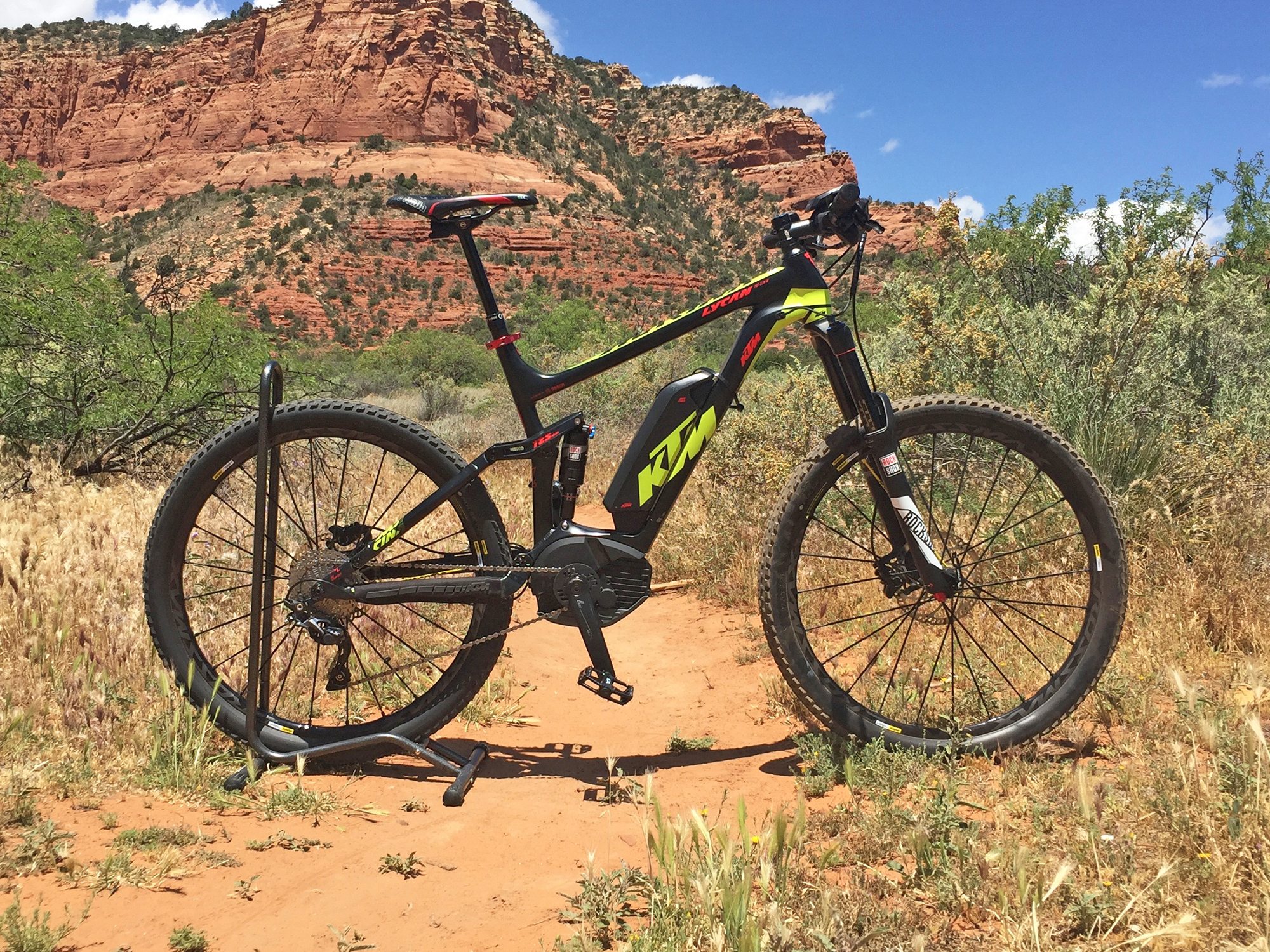
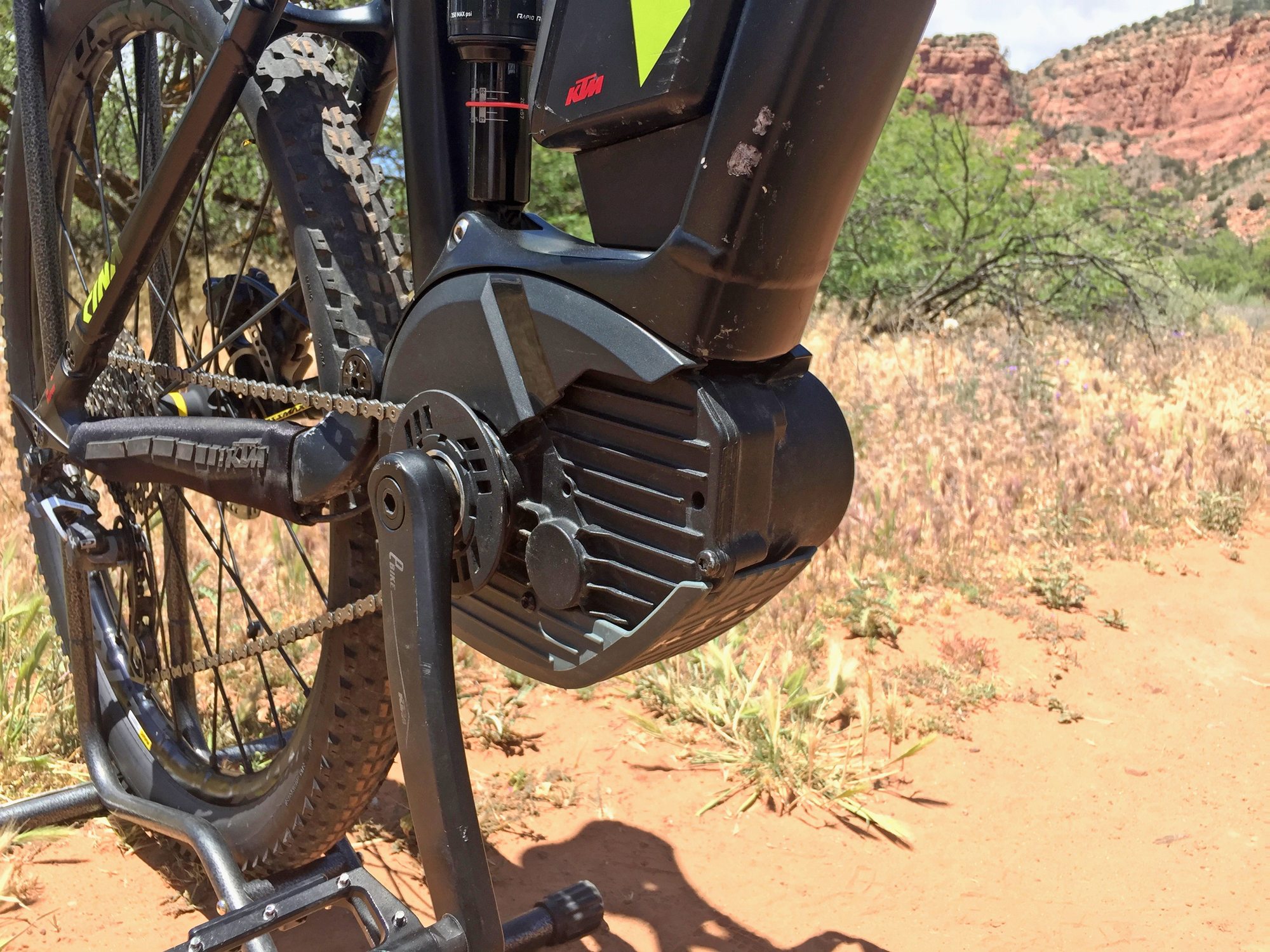
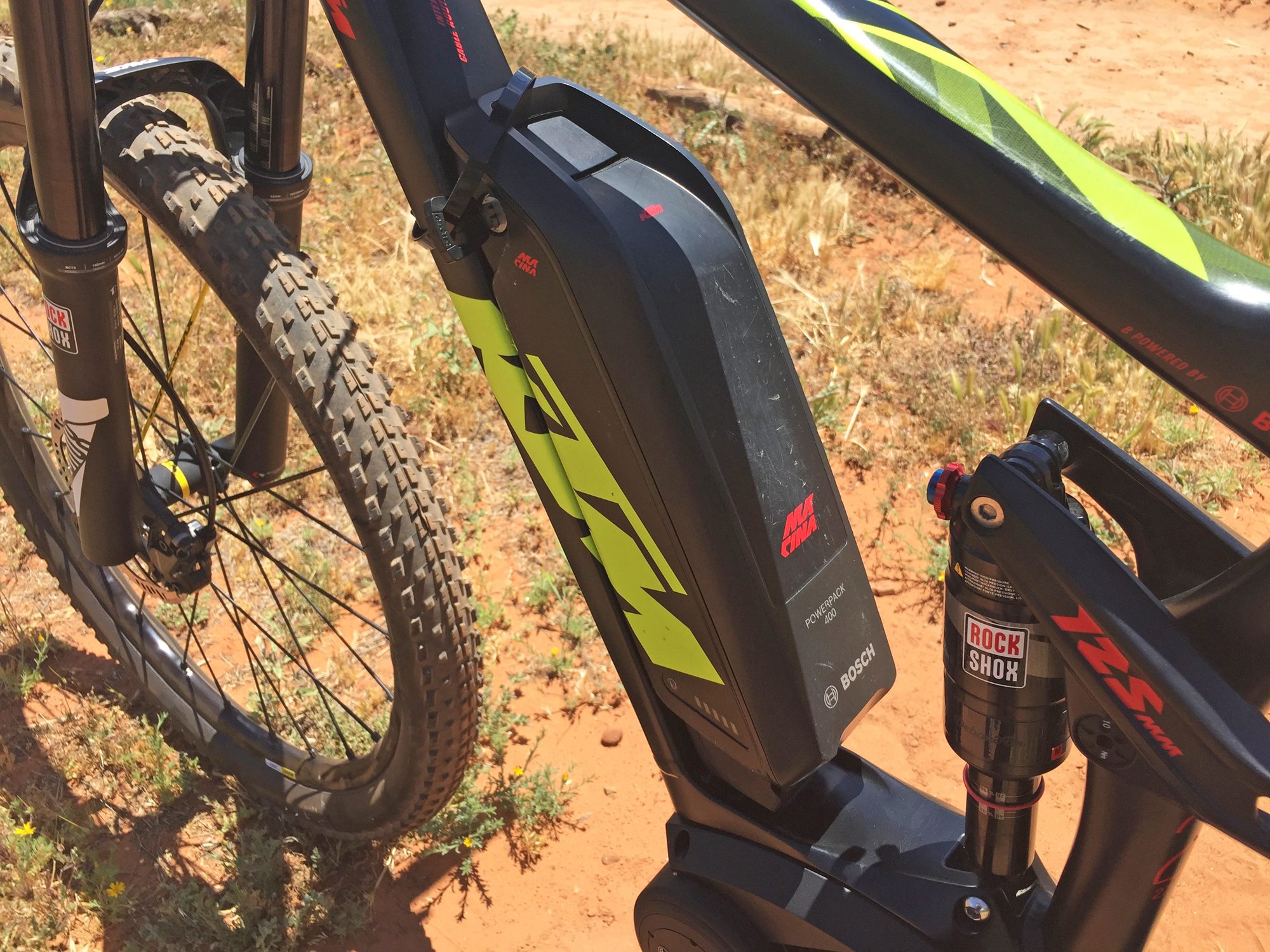
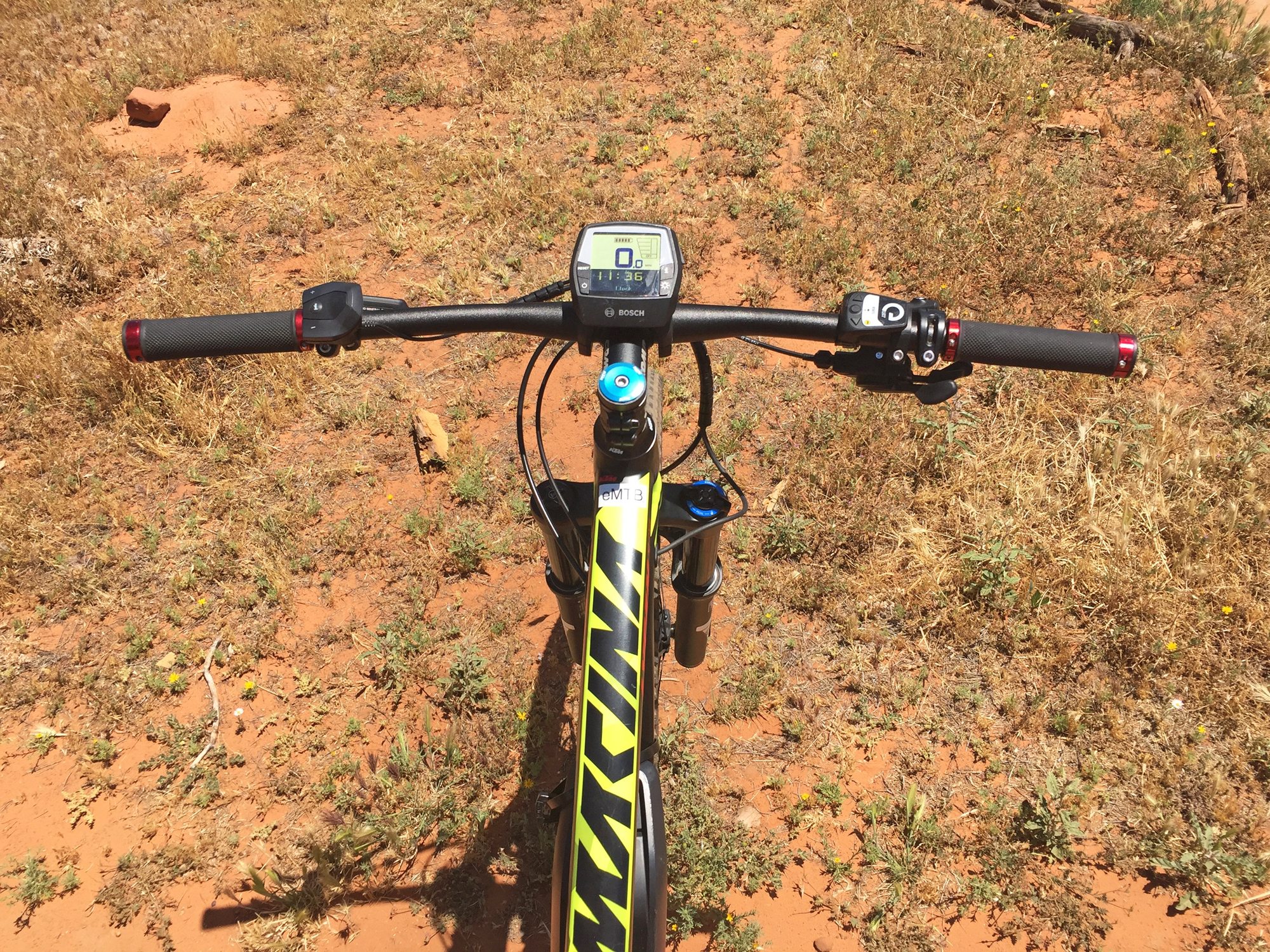
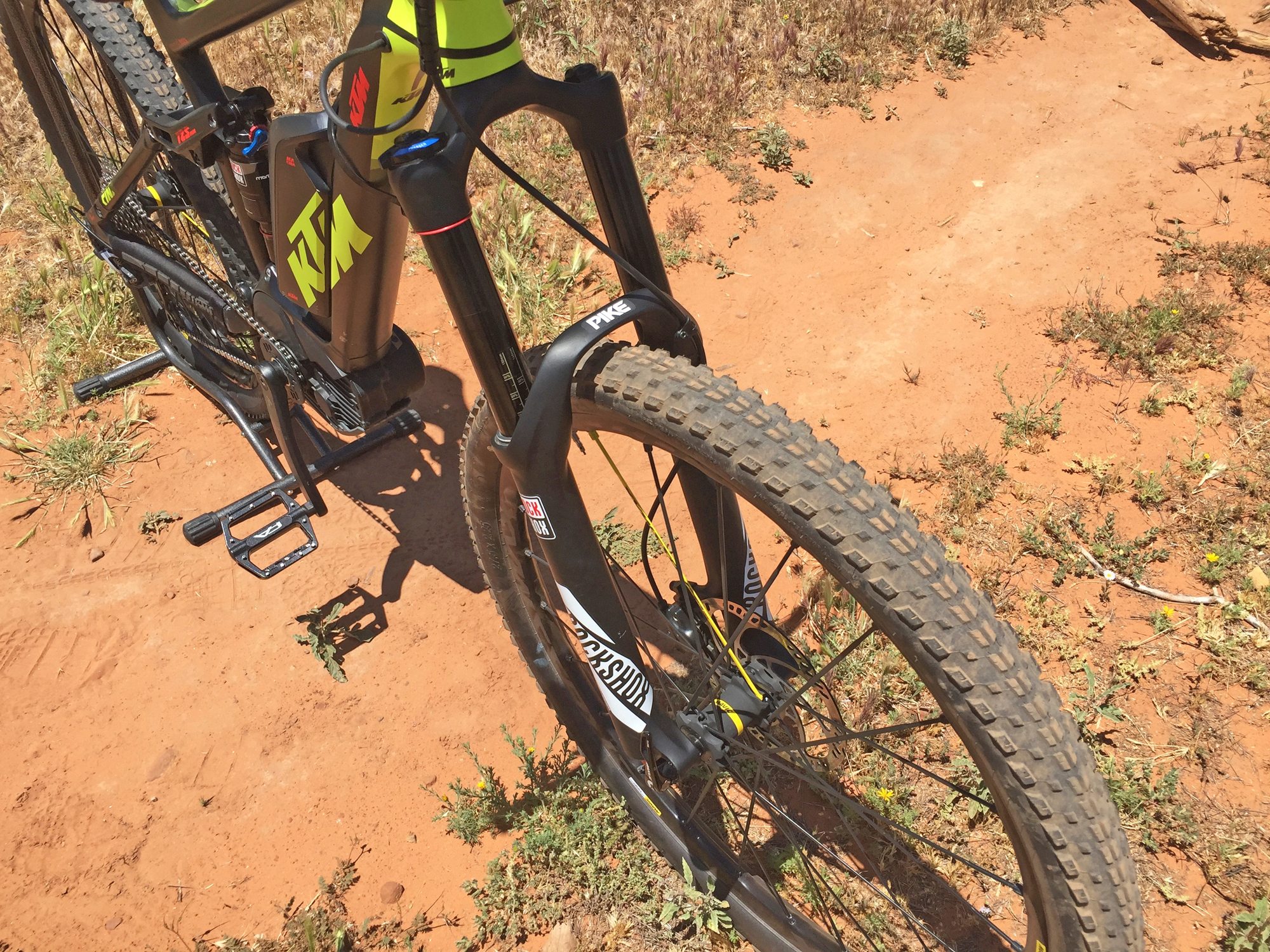
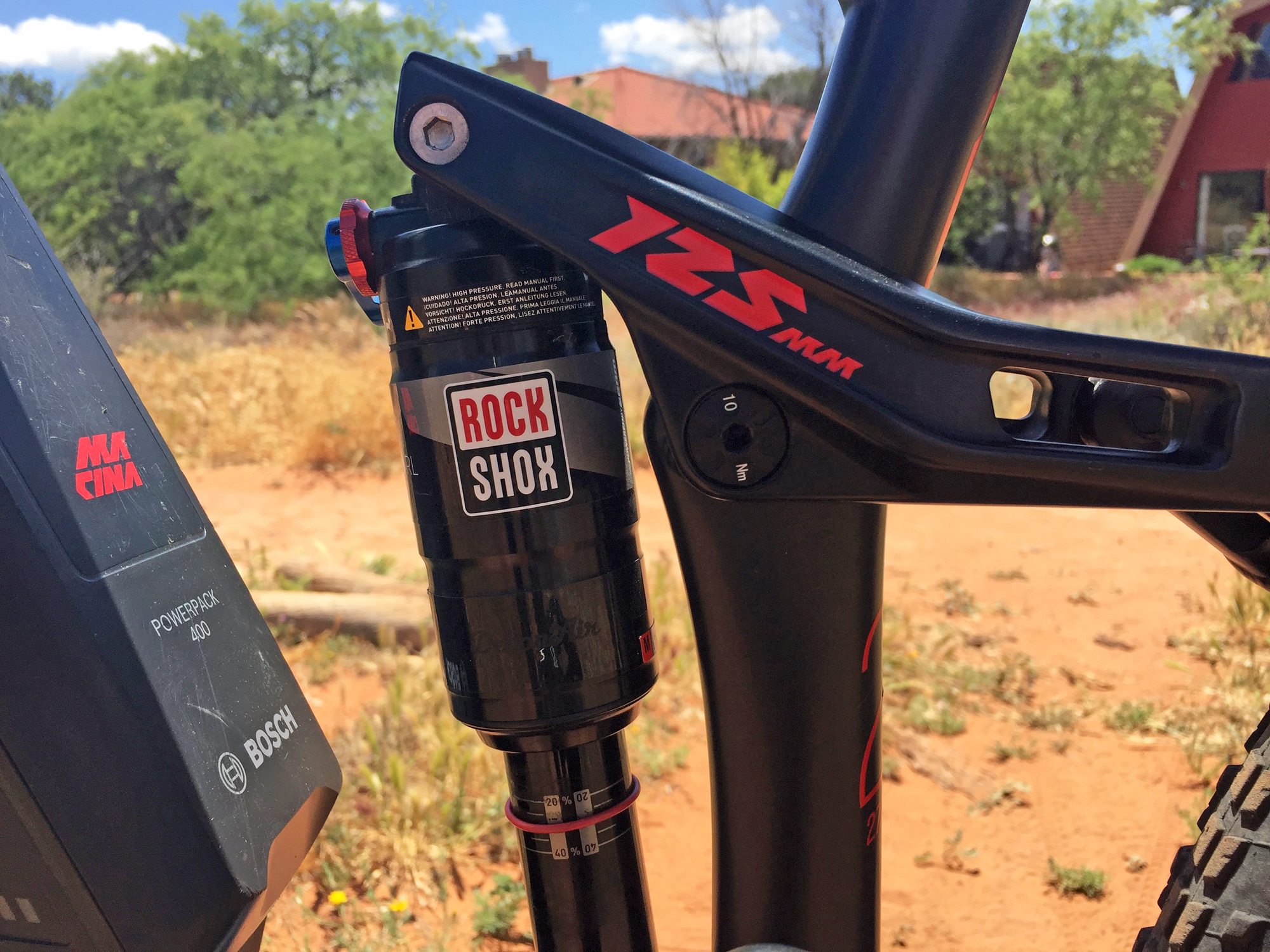


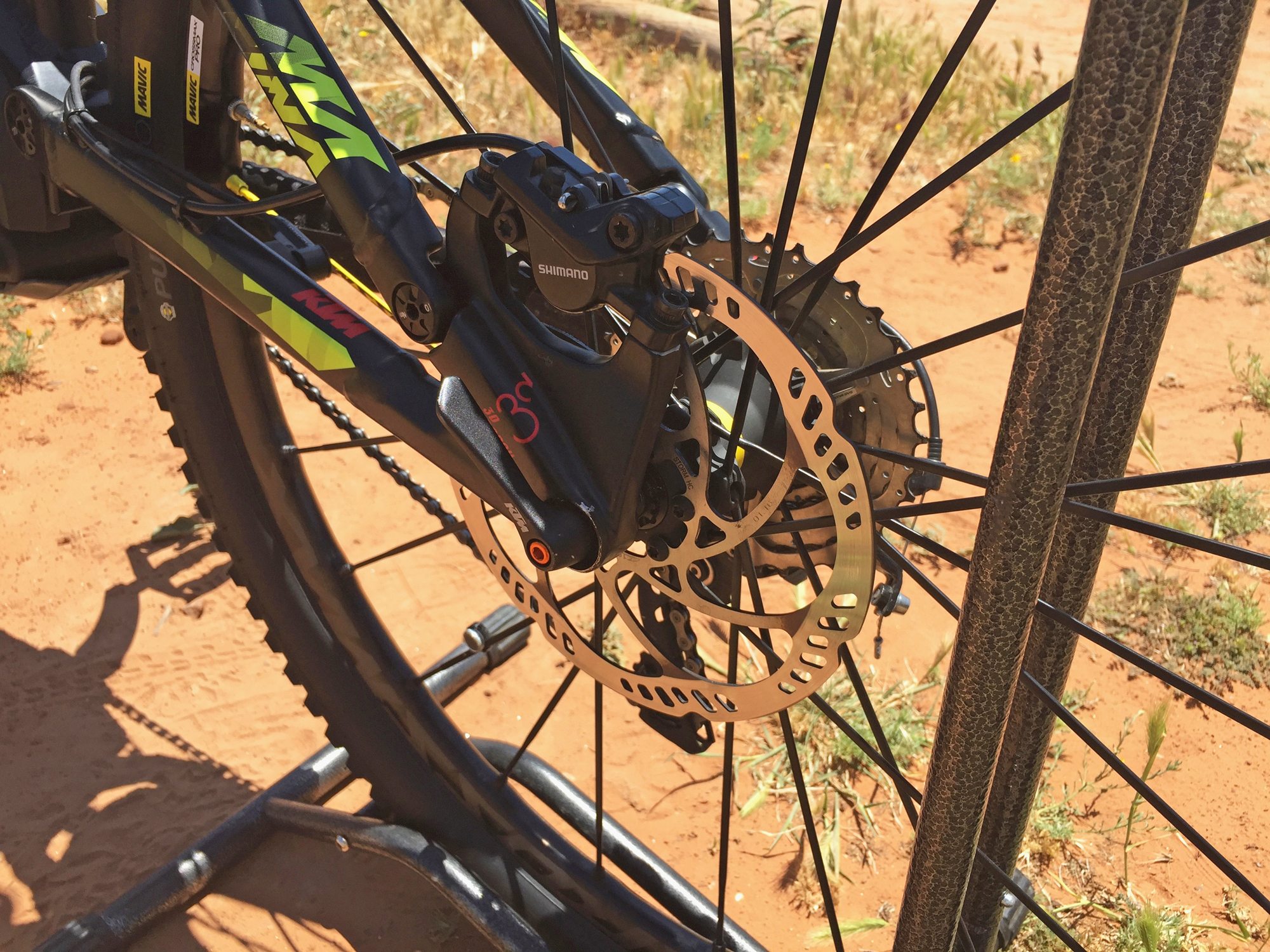
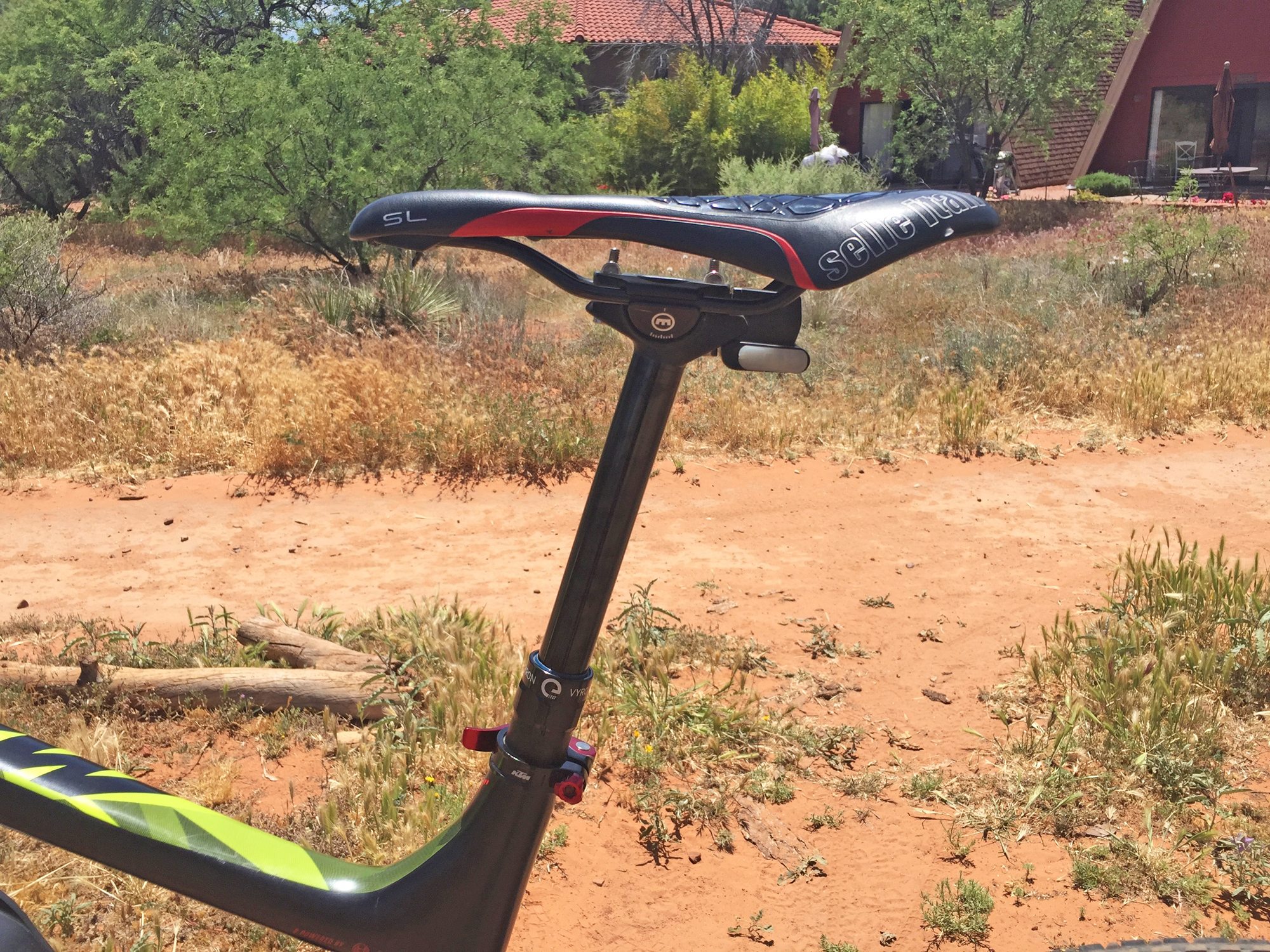
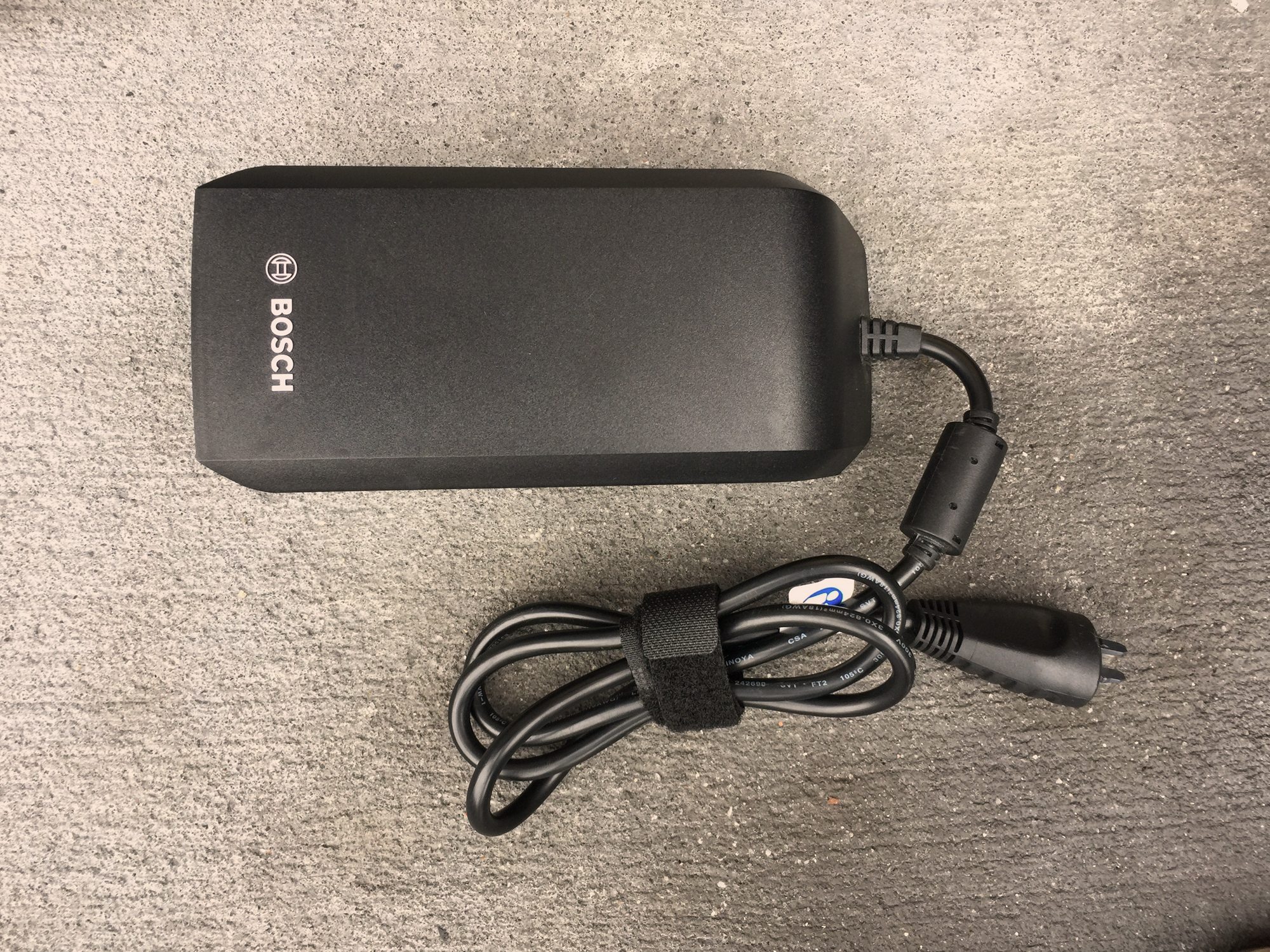

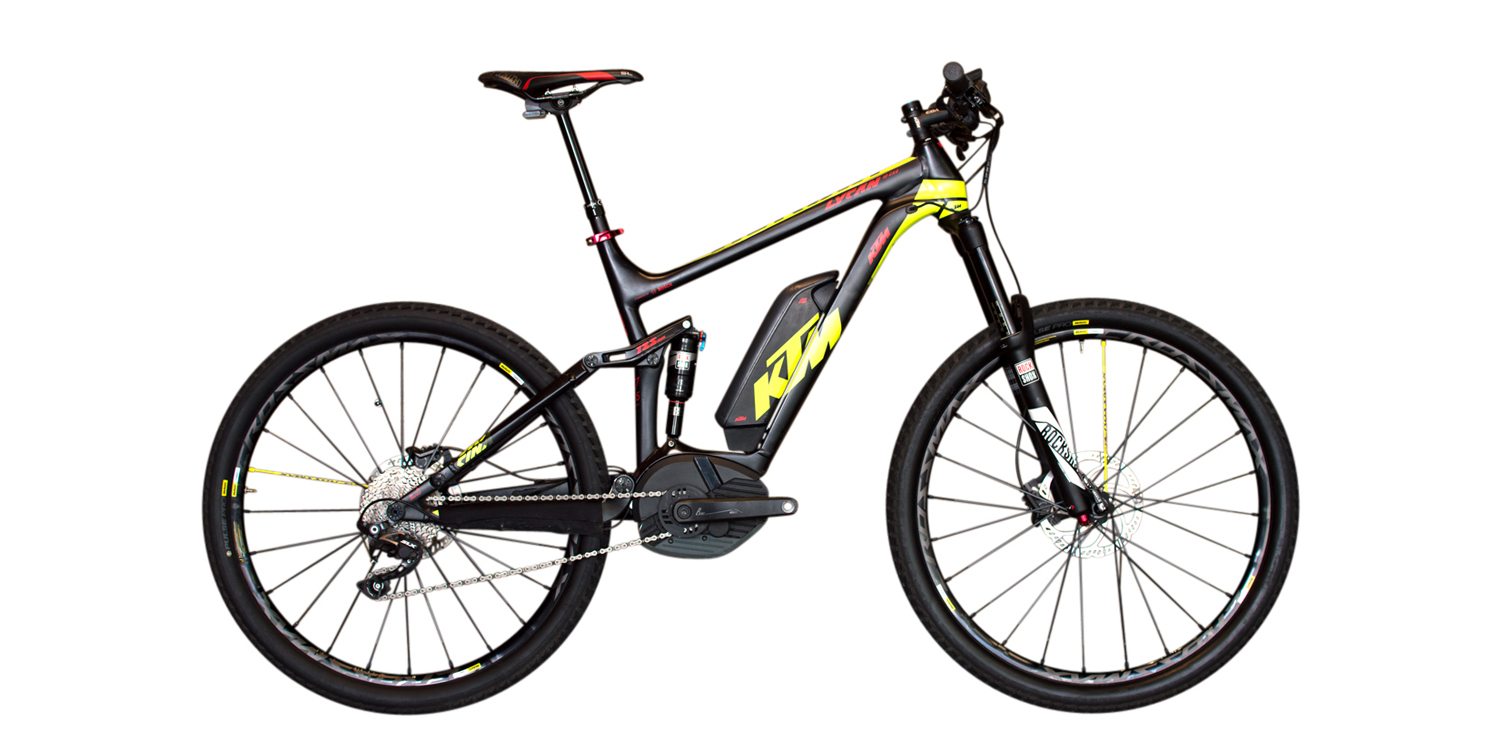
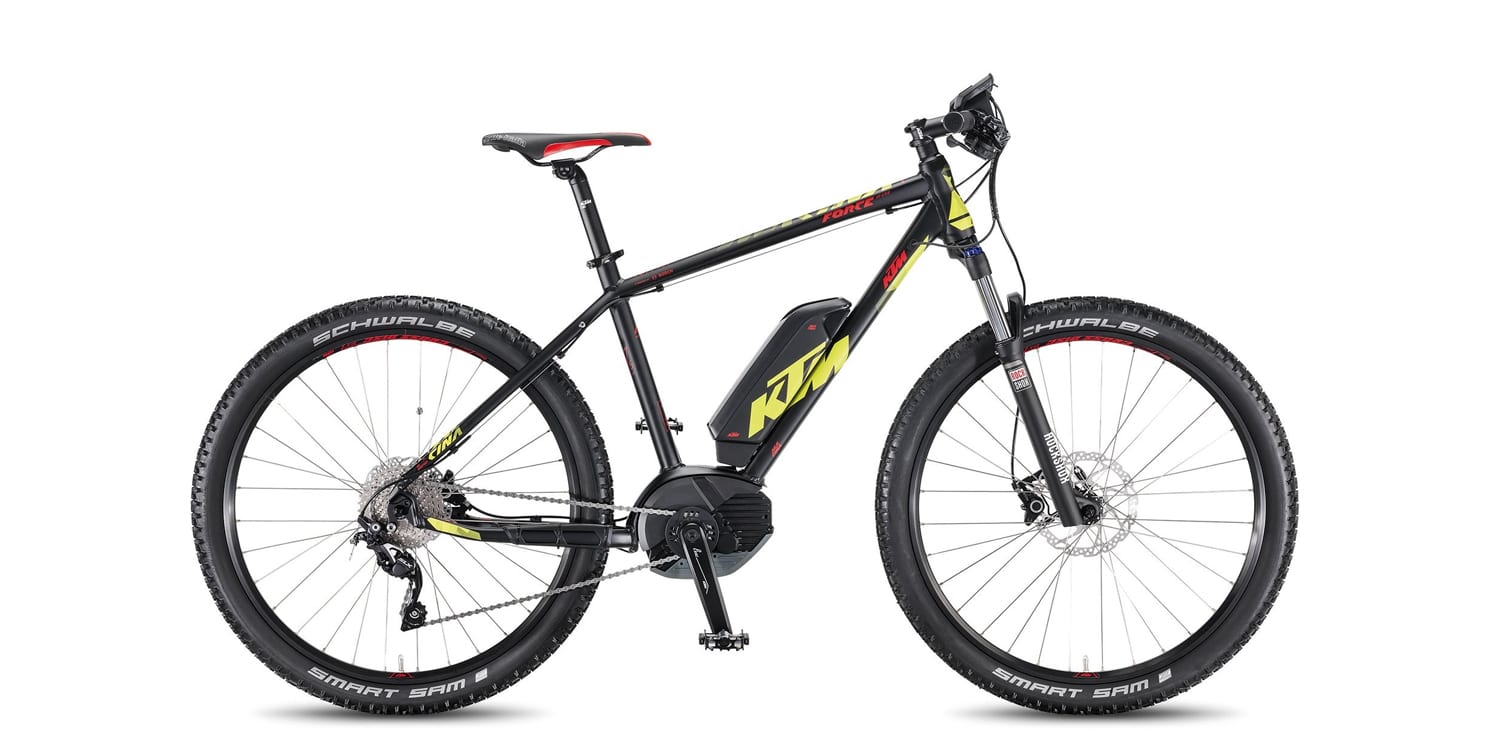
Reader Interactions